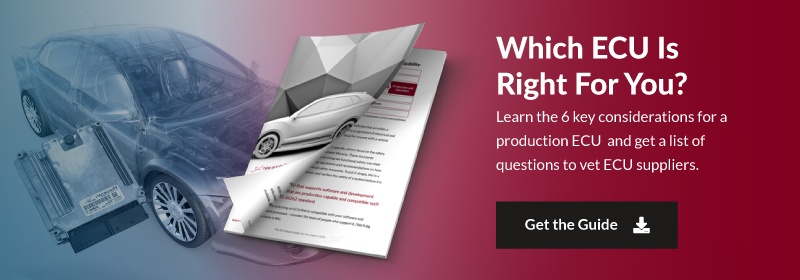ISO 26262 is a worldwide safety standard that should be applied during development of road vehicles. These standards are generally respected throughout the industry, and considered to be cutting-edge.
Though many vehicle components (including New Eagle’s RCM80 and RCM112) are designed to be ISO 26262-capable, actual compliance is a whole different animal.
One major element of compliance is that your results must be verified and validated by an independent lab. Here’s how New Eagle helps your vehicle achieve functional safety, and prepares you for compliance testing.
1. We help determine your components’ ASIL ratings.
There’s not really an objective set of rules when it comes to ASIL ratings. Rather, they involve a lot of guesswork and judgment calls.
The ASIL rating system (A through D) helps measure the failure rate of each component you’re using in your design. D is the goal, but most vehicles can achieve functional safety even with several ASIL B and C components.
New Eagle pinpoints your ASIL grades by performing a Hazard Analysis and Risk Assessment of your components, based on three industry-standard criteria.
Probability of exposure to hazardous events
A hazardous event is an operational situation in which the vehicle’s driver could potentially wind up in an accident if they don’t act in a timely manner.
New Eagle works with you to determine the frequency of the operational conditions that can lead to injuries, and helps you mitigate unacceptable levels of risk.
Severity of potential injuries
Each hazardous event is measured by the severity of injuries it’s likely to cause, ranging from minor scrapes and bruises to mortality.
Even the most severe potential injuries may be deemed an acceptable risk depending on the probability of exposure. New Eagle has the experience to help you make that uncomfortable determination.
Controllability of the situation
The risk of severe injury in an accident may be mitigated by the driver’s capability to take fast action to prevent that injury. But if a bad situation is difficult to control, the risk level may be unacceptable even if the event is rare and not life-threatening.
2. We help you pinpoint solutions.
ASIL ratings are subjective, but New Eagle can help you reduce your exposure, severity, and controllability risks to commonly acceptable levels within your vehicle’s probable driving environment.
We’ve learned a wide variety of risk mitigation tactics throughout our many years in business, but in general these tactics fall into one of two main categories.
Add redundancies.
A redundancy can create a sort of “safety net” for certain components if their failure risk is too high. You can achieve ASIL D with two ASIL C redundancies, for instance.
In some circumstances, the most cost-effective solution might be to simply add a series of redundancies in order to reduce the statistical probability of a hazardous event, or make the situation more easily controllable.
Use a different combination of parts.
Even if your components are ISO 26262-capable, the way they work together as a system might cause your vehicle to fall short of functional safety. In that case, we can help you experiment with different combinations of similar parts until we achieve the desired result.
Trust our experience.
New Eagle has been helping customers bring safe vehicles to market for over a decade. If you need help determining your ASIL levels and finding solutions, contact the New Eagle sales team or download our functional safety planning guide to get started.




